
Putting Area G Back on the Map
Something big happened last Saturday. There was a regional qualifier for the Sears Cup junior national championship, and Area G showed up.
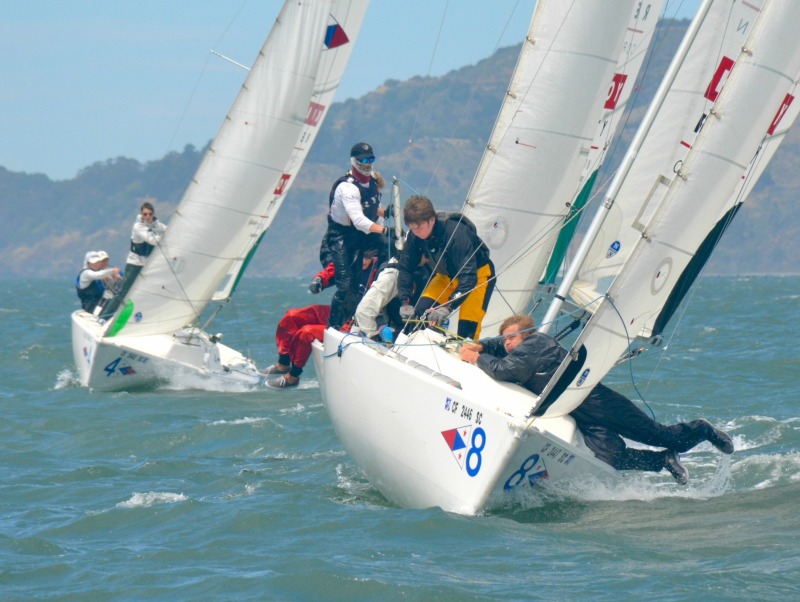
Showed up as in, seven boats representing four clubs plus the Peninsula Youth Sailing Foundation. People, this is a game changer. In recent years, these qualifiers were an afterthought, if they were a thought at all. Area G is stirring. And in case you don’t know, Area G is us, Northern California through Northern Nevada.
Richmond Yacht Club’s Owen Lahr won four of seven races and his second trip to the Sears Cup. Well done. There is no question who should represent Area G. In 2017 at Toms River, New Jersey, Lahr and crew Connell Phillips and Nick Nash finished eighth, racing in foreign-to-them Flying Scots, aka Flying Squats. The boys will have their work cut out again when they venture to Lake Erie and the township of La Salle, Michigan, August 6-10 for the US Sailing triple-handed championship, the Sears Cup, in Lightnings, in Lightning country. Oh boy.
They’re all but unknown around here, but Lightnings are huge, with 100 active fleets worldwide, a savvy class organization, major concentrations east of the Mississippi and a cult following. (Florida State University’s Jeffrey Heyden, winner of the Lightning junior worlds on Saturday in Voula, Greece, is a fifth-generation Lightning sailor.) The Lightning hull is hard-chined, and the crew is tasked to be always moving the mojo to maintain a specific angle of heel. There’s a learning curve. Regional selections are still underway, so the field is not set, but should Lahr and company pull off a win, we’ll call it bearding the lion in his own den.
The Sears Cup was created as a regional in 1921 and went national in 1940. Saturday’s qualifier ran as a cooperative between the San Francisco Yacht Club, which provided the PRO and signal-boat team, and St. Francis Yacht Club, which provided J/22s, mark-set services and all the attractions of the "other" Riviera: breeze in the teens, touching 20 in the gusts. Mostly ebb and whitecaps, of course; a full-foulies day. Lahr, in high school in Pleasanton, has also lived in the South Bay, but he says, "I grew up at Richmond Yacht Club." He’s keen on match racing, too, and wishes he had more opportunities as a youth sailor (that’s a hint, Northern California).
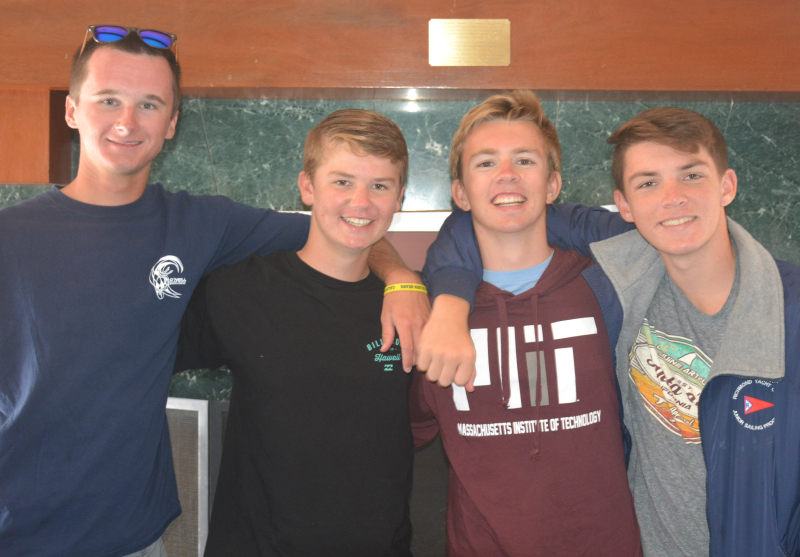
Out of seven boats, four were competitive. Encinal Yacht Club’s Simon Boeger came second ahead of St. Francis Yacht Club’s Nick Dorn. Yes, Area G showed up. It’s a beginning. We’re going to put Area G back on the map.
Solo Sailors All Safely in at Kauai
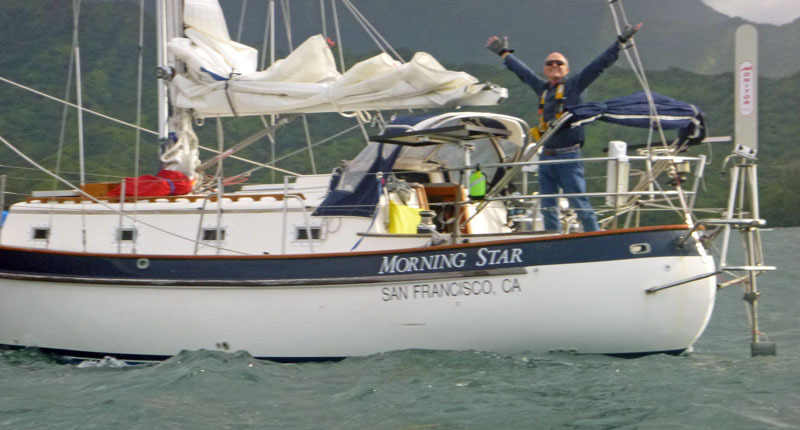
©2018 Latitude 38 Media, LLC
With the arrival of Lee Johnson on the Valiant 32 Morning Star, all 16 boats in the 2018 Singlehanded TransPacific Yacht Race are safely in. The race started in Tiburon on June 23. Some of the boats will remain in Hawaii under the care of new owners, including the first-to-finish and overall winning boat, Philippe Jamotte’s Olson 30 Double Espresso, which the Kauai Sailing Association has arranged to purchase. At least some of the boats that will be shipped back to California have departed the stunningly beautiful north shore of Kauai for Nawiliwili, the port on the other side of the island. Others will sail home on their own bottoms.
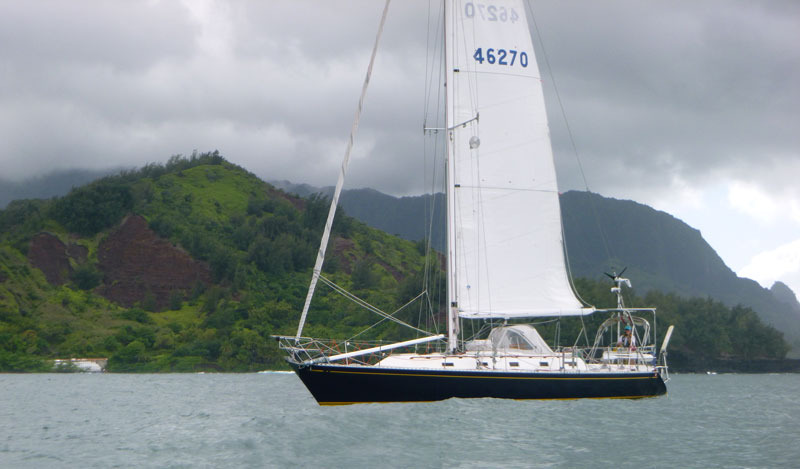
© Latitude 38 Media, LLC
Although no one suffered major injuries, almost every boat reported some damage. For instance, Don Martin’s Wyliecat 30 Crinan II tore its only sail, but Don sailed with it for the final five days. Shad Lemke’s Olson 30 Dark Horse suffered a knockdown that resulted in the sea claiming one of his two solar panels. Aboard Carliane Johnson’s Freedom 38 Kyntanna, the broken stuff included the boom vang and jib headstay.
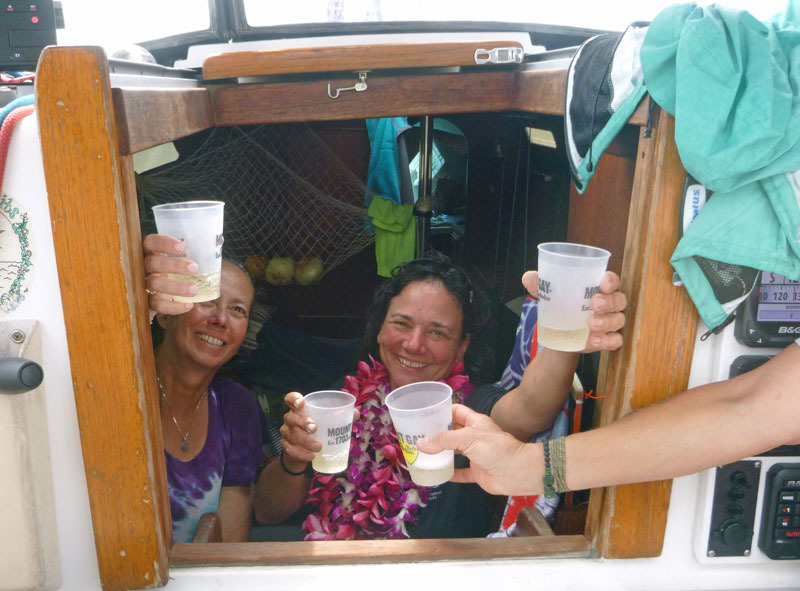
©2018 Latitude 38 Media, LLC
The sailors had various reactions upon finishing. Some were mightily relieved to get off their boats. Carliane invited her son, friend and race committee volunteers aboard for champagne and chocolate. Lee said he’d have gladly kept going, except that he’d used up one of his two tanks of water the first five days out. Lee, the last-place finisher, and Philippe, the first-place finisher, seemed to have had the most fun out of the whole fleet. Both were first-timers in this race, and both were making their first ocean crossing.
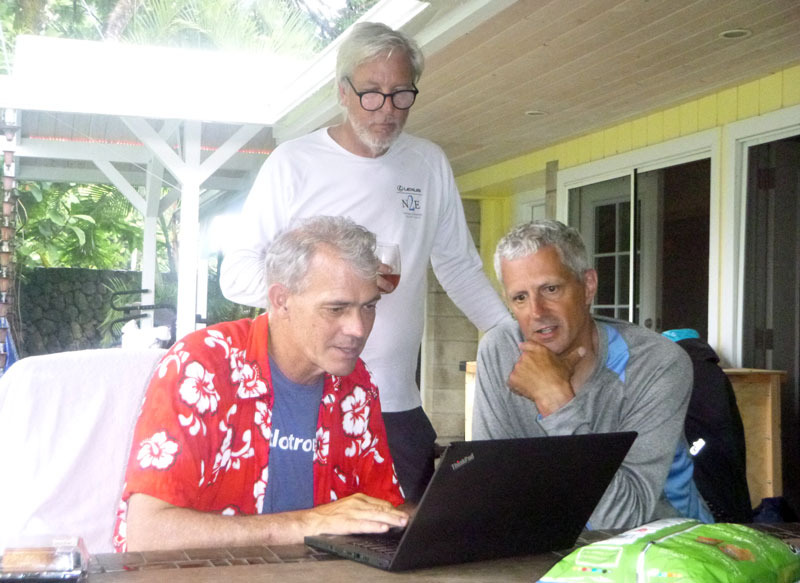
©2018 Latitude 38 Media, LLC
Nawiliwili Yacht Club will host the awards party this Saturday. We’ll have complete coverage in the August issue of Latitude 38.
They’re Off. Again.
The four divisions of Pacific Cup Monday starters scored a beautiful day for a sail on the Bay, but made sure it was short-lived by dashing for the Gate and pointing southwest as they latched onto the reaching conditions to propel them west. After two days, the leaders are about 300 miles out with 1700 miles to go to finish. There’s already a wide split between those who’ve stayed north and those who took the southern track (the Moore 24 Foamy has dived the farthest south). Bill and Melinda Erkelens, sailing their Donovan 30, Wolfpack, are the next-farthest south, suggesting that’s a good neighborhood. But "The entire fleet are all sailing toward a light-air hole, caused by an upper-level low that is forecast to sit right on top of the rhumb line and shut off the breeze for virtually everyone," said Ronnie Simpson, a Latitude 38 contributor who’s also doing the Pac Cup media.
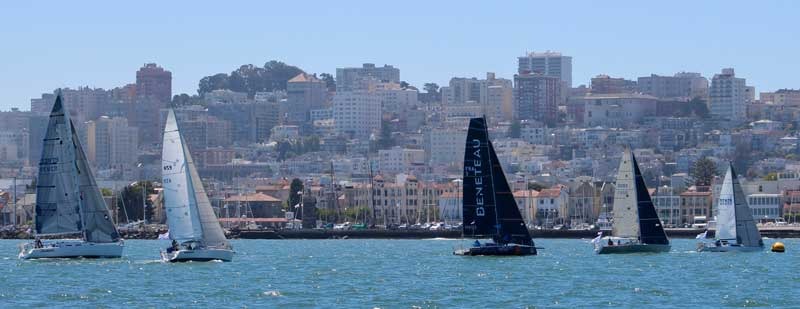
"Cal 40’s are currently 1-2 overall, with race stalwart Jim Quanci and his venerable Cal 40 Green Buffalo remaining atop the leaderboard over the first two days of the race," Ronnie told us. "The entirety of the four-boat Coral Reef Sailing Apparel/A division is on the rhumb line, but the fleet is sailing toward a date with a big patch of light winds, threatening to significantly shake up the leaderboard."
Today’s morning fog is burning off as we type, so another sunny start predicted for the 1:05 p.m. start of the Weems & Plath PHRF division and the Alaska Airlines PHRF division starting at 1:15. While there likely will be good breeze in the Bay, as suggested in Monday’s wind forecast, it’s looking to be more challenging to get away from the coast and into the ‘take me to Hawaii’ reaching conditions.
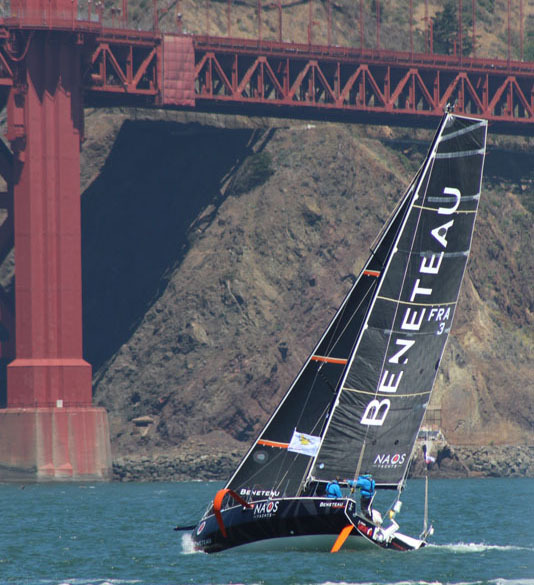
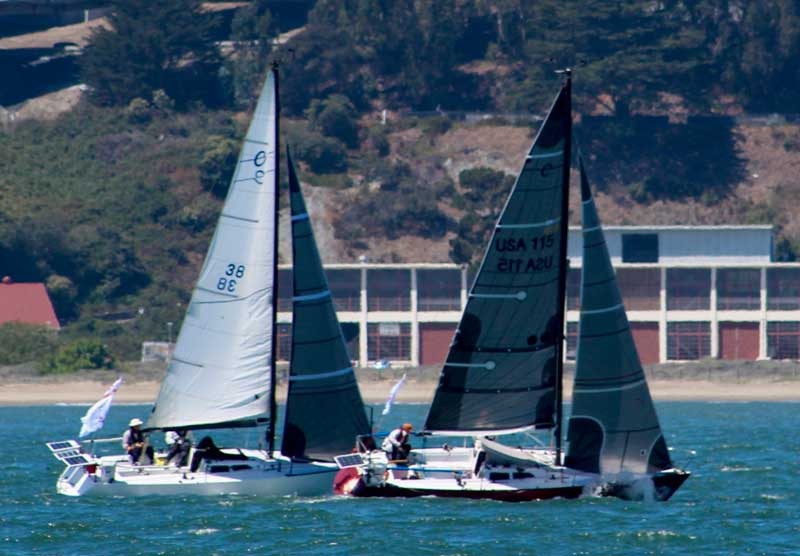
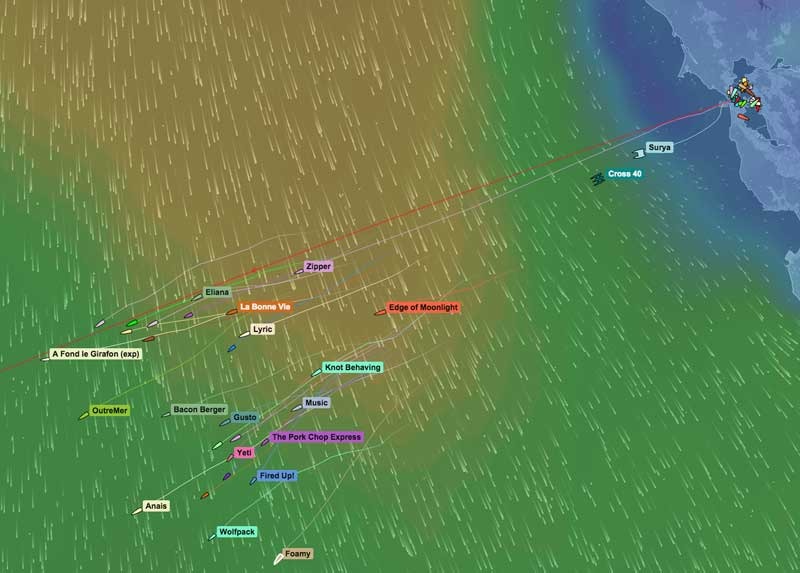
As we showed you in Monday’s ‘Lec Lat, the roll-of-the dice starting conditions will be a factor in the final outcome, but there are a lot of strategic course choices to be made during the 2070 miles between California and Hawaii that could leave the early conditions irrelevant.
After today, two more divisions will move into the starting gates with Class D: the Pasha Hawaii ORR Division starting on Thursday at 1:45 p.m., and the big-boat Class E BMW of San Rafael ORR Division starting at 2:45 p.m. on Friday. They have two days left to pray to the wind gods.
Fender Mind Bender
We just got this letter from reader Glenn Shinn in Santa Cruz (who recently restored Grendel, a prototype for the Moore 24):
"One of the first things I do when I go sailing is stow the docklines and fenders. I see a lot of other boats — both power and sail — out and about on the Bay with fenders dragging in the water. In my opinion, it looks bad to see a nice boat in the middle of the Bay with four fenders dragging in the water! Come on people, pull up your fenders."
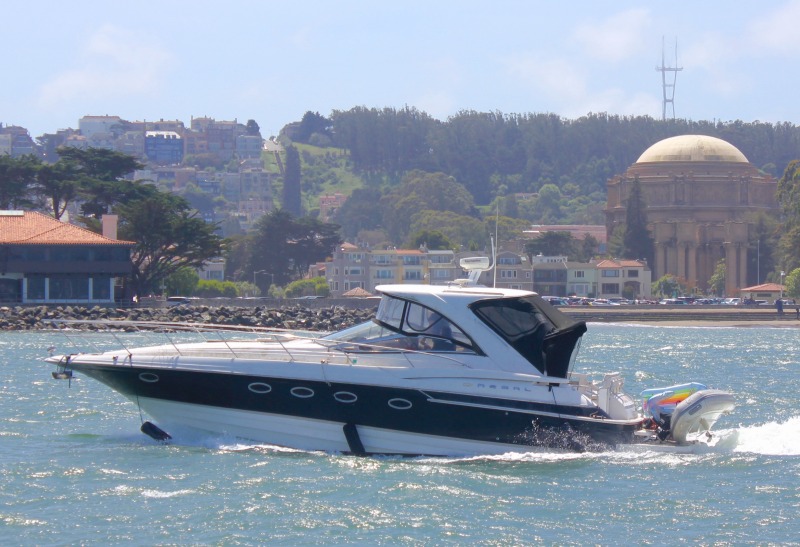
© Latitude 38 Media, LLC
Glenn — we could not agree more. Seeing fenders dangling over the side is the nautical equivalent of nails on a chalkboard. It looks bad, but more importantly, it’s poor seamanship to have superfluous equipment dragging in the water and unnecessarily straining/chafing/bumping against everything.
But, we do have what might be a controversial counter thought.
We always tell people that the very first thing we learned about sailing was: Pull your fenders up the second they’re no longer fending. Our first lesson wasn’t about the wind, it wasn’t about the mechanics of sails or lines, and it wasn’t about safety, it was about how to not look terrible when you’re on the water where everyone can see you.
One of our cousins — who was initiated with the same lesson — got into commercial fishing, where he started to shed some of his deeply ingrained fender etiquette. When going from dock to dock on a fishing boat, he said, there’s really no reason to pull up your fenders. It’s unnecessary work done solely for the purpose of appearances. But if you’re going out to sea for a few days, you obviously want your boat tidy and shipshape.
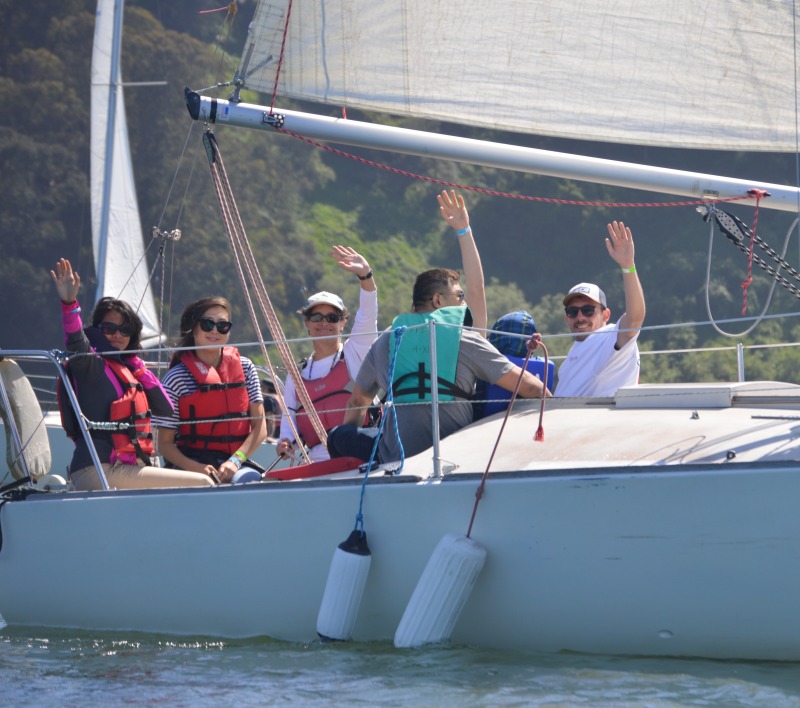
©2018 Latitude 38 Media, LLC
This seemingly radical notion kind of opened our eyes. It was the chance to unlearn something that had been beaten into our heads. When we recently acquired an old Columbia 24, the fenders were tied with old, fraying knots that were fused in place. So we pull the fenders onto the deck while cruising, but they often roll off and dangle in the water for long moments before we retrieve them again. And you know what? There are times when we just don’t care.
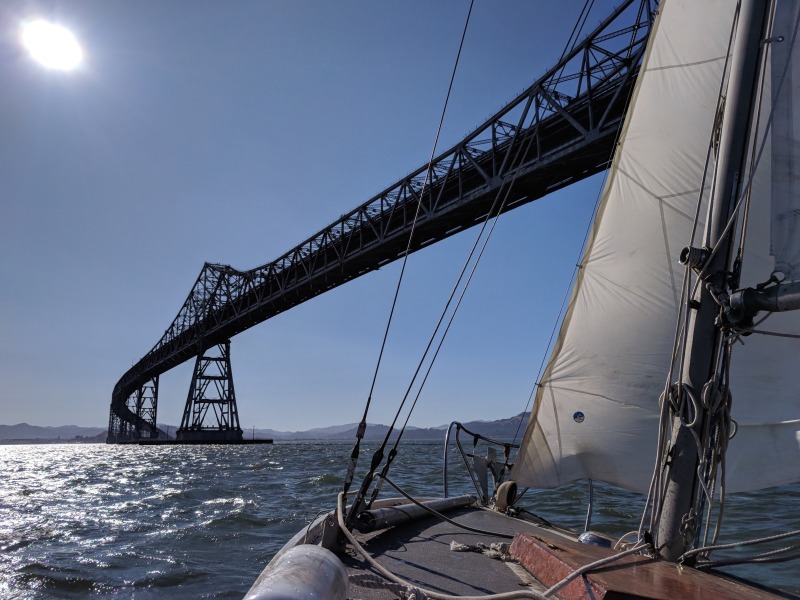
That’s right, sometimes we sail with our fenders down, and it can be a remarkably liberating act of rebellion. It’s like dyeing your hair green when you get to college. It’s like putting Cool Whip on your breakfast cereal because your mom told you not to. Sure, it’s a stupid idea, but there’s something to be said for taking a moment — just a moment — to unlearn what you’ve learned or what was beaten into your head, and to ask yourself why you go through certain motions.
What are your thoughts on fender etiquette?
